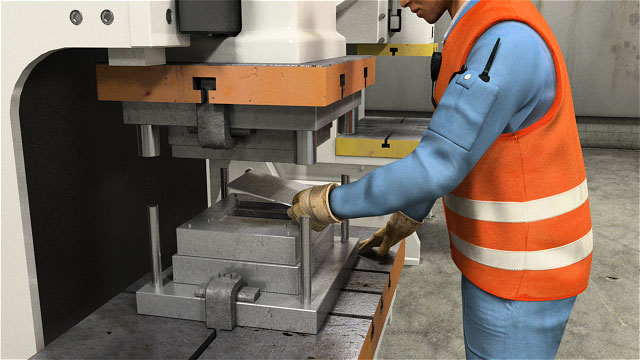When injured at work, there is a very narrow exception to the workers’ compensation exclusive remedy doctrine for civil damages against an employer where the employer has caused and/or prevented its employees from safely operating power presses without guards. Generally, an employee’s rights against his or her employer for injuries suffered on the job lie solely under the workers’ compensation law. The main questions to ask are:
- Is the machine that caused the injury a power press?
- Did the employer remove or fail to install the guard? and
- Did the power press machine cause the injury to the employee due to a lack of proper guarding?
What is a Power Press?
A power press as a material-forming machine that utilizes a die designed for the manufacture of other products. A die is a tool that imparts shape to material by pressing or impacting against or through the material . . . by punching, stamping or extruding. Rosales v. Depuy Ace Medical Co. (2000) 22 Cal.4th 279, 285. A machine that simply had a cutting head, like a saw, is not a power press. In addition, a machine with a die not used to manufacturer another product, such as a newspaper printer, is not a power press.
When is the Employer Responsible?
An employer is liable under the narrow exception to the workers’ compensation exclusive remedy when the employer specifically authorizes the removal of or fails to install the guard on the power press. A guard a worker’s hands outside the point of operation die space while operating a power press. A machine may have more than area that requires a guard on each machine. The guard must be attached to the power press. It cannot be easily removed such as a loose block of wood.
Actual Knowledge is Requires for the Power Press Exception. Simply stated, a worker must prove the employer knew a guard was removed or was never installed. With actual awareness, an employee would be precluded from bringing a claim under the power press exception.
Did The Lack of Guard Cause Injuries?
Power presses are industrial machines with extremely high risks of causing injuries when guarding has been removed or never installed. Some of the risks that cause injury in the absence of guarding include: inattentive operators, poorly trained operators or even machine malfunction. Whether powered by hydraulic pressure or other power source, guarding is intended to prevent and/or reduce the risks associated with the factors that lead to these types of injuries. Common injuries caused by a power press malfunctions include:
- Amputations
- Crush Injuries
- Lacerations
- Nerve Damage
- Chronic Regional Pain Syndrome
- Loss of Motor Function
- Death
Conclusion
Although very narrow, the power press exception is of critical importance in the no-fault worker’s compensation system as it prevents the employer from shielding itself behind the workers compensation exclusive remedy. The reason is simple— we need to keep our employees safe. Requiring employers to protect against foreseeable risks of injury with a guard in place is a small ask to prevent a tragic injury.

